How to Eat Healthy on a Fixed Income With Meals That Cost Less Than $5 (Nutritious and Affordable Eating)
What if I told you that eating nutritious meals for under $5 isn’t just possible—it’s achievable even with today’s grocery prices? In 2025, Americans spend an average of $235 per week on groceries ($940+ monthly per person).
With food-at-home prices rising 2.3% year-over-year Beehive Meals Instacart. For those eating well on a fixed income, these rising costs create real challenges.
This guide reveals proven strategies to create budget meals under $5 per serving, current 2025 grocery shopping tactics that work, how to access food assistance programs, and meal planning on a budget systems that reduce waste while maximizing every dollar.
How to Eat Well on a Fixed Income in 2025: Your Complete Guide
You’re staring at your bank account. Then at the grocery store, prices. Then back to your account. The math isn’t working anymore.
💰 Eat Well on a Fixed Income (2025)
You’re not alone. Millions of people on fixed incomes are trying to figure out how to eat well when food prices keep climbing. This guide will show you exactly how to do it—with real numbers, actual meal ideas, and strategies that work right now in 2025.
What Groceries Actually Cost in 2025 (And Why Your Budget Feels Tight)
Let’s talk real numbers first.
The USDA says a family of four needs about $993 per month just for groceries on their thrifty plan. That’s their cheapest option. For one person, you’re looking at $250 to $400 monthly depending on where you live.
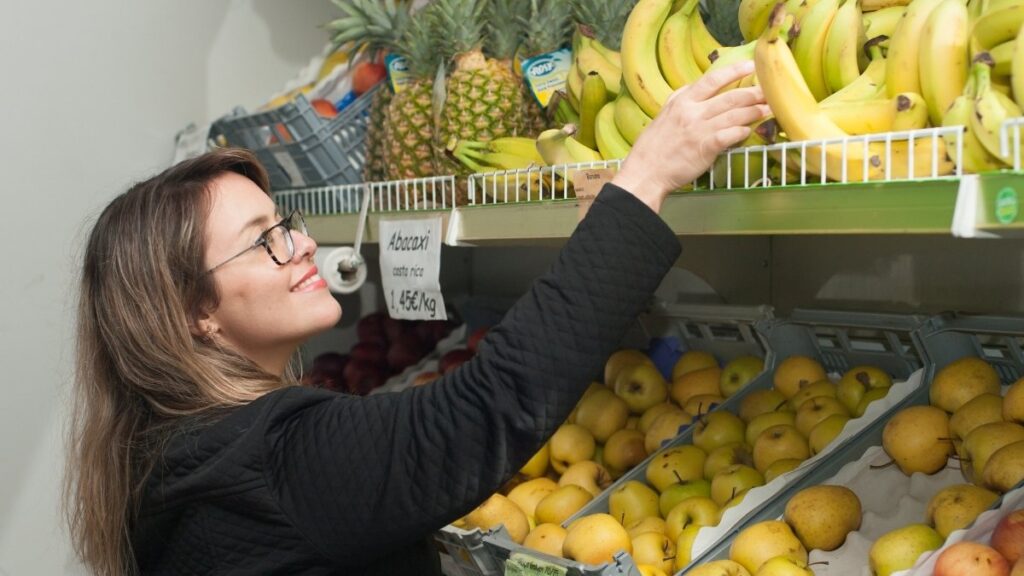
Here’s what makes 2025 tough. Some foods shot up in price fast. Eggs jumped 27%. Beef and veal climbed 10.6%. Even drinks like juice and soda went up 4-5%.
When you’re on a fixed income, these price increases hit different. Your Social Security or pension doesn’t change month to month. But your grocery bill does.
Regional price variations matter too. The same cart of food costs more in New York City than in rural Kentucky. Your $363 average monthly food cost could be $300 or $450 based on your zip code.
The challenge? Your income stays the same while food gets more expensive. That’s why you need a plan.
The 20 Best Protein Sources That Cost Less Than $3 Per Serving
Protein is expensive. Or so you think.
You can get plenty of protein without breaking your budget. Here are the cheapest options that actually taste good and keep you full.
The Plant-Based Winners:
Black beans cost about $1 for a 15-ounce can. You get 7.6 grams of protein in half a cup. One can gives you three servings. That’s 33 cents per serving.
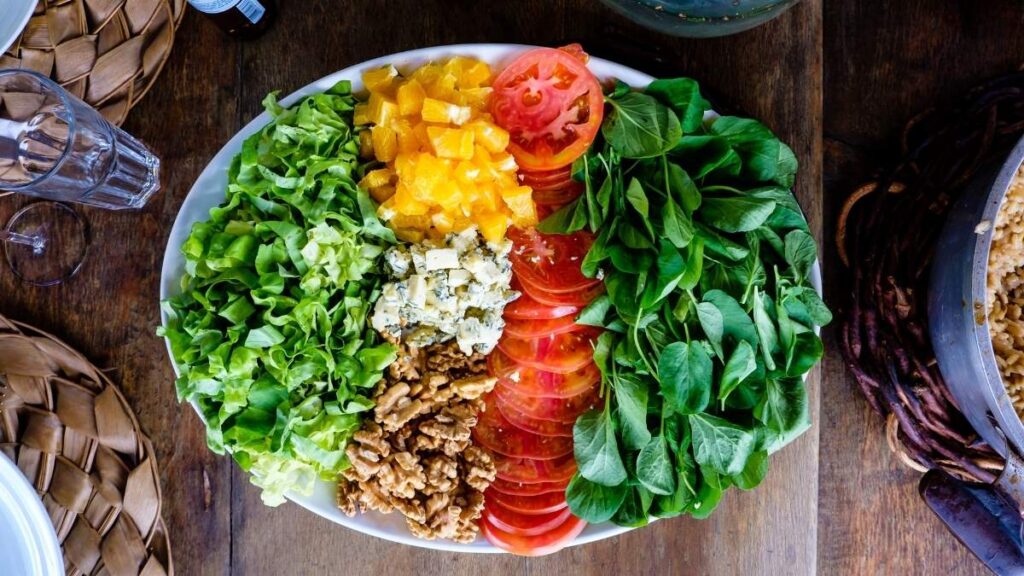
Lentils run $1.50 per pound dry. They pack 9 grams of protein per half cup cooked. One pound makes about 12 servings. Do the math—that’s 12 cents per serving.
Peanuts and sunflower seeds give you 6 grams of protein per ounce. Sunflower seeds cost around $2 per pound. Sixteen servings for two bucks.
The Animal Protein Deals:
Eggs remain one of the best deals in the store. Six grams of protein each. Even with the 2025 price increases, they’re still cheap per serving.
Chicken drumsticks are the cheapest part of the chicken. They give you tons of protein per calorie with zero carbs. Look for them on sale.
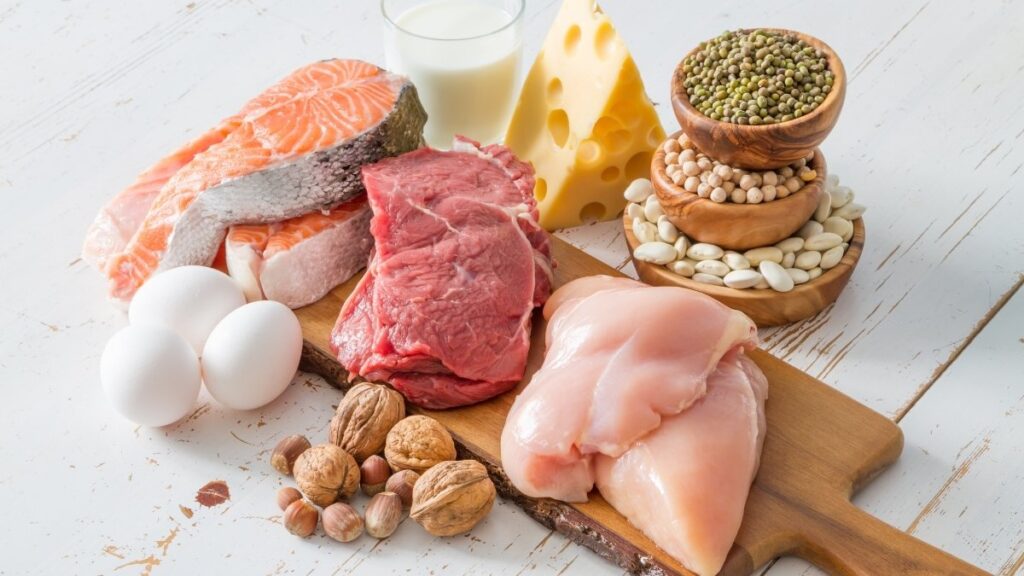
Canned tuna costs about $1 for a 5-ounce can. You get 22 grams of protein per 3-ounce serving. That’s two servings per can.
Canned salmon runs $3.60 for a 6-ounce can. You get 17 grams of protein plus omega-3s your body needs. More expensive than tuna but still budget-friendly.
Ground turkey ranges from $3 to $7 per pound depending on sales and fat content. The higher fat versions cost less and work great for tacos and chili.
Cottage cheese delivers almost 24 grams of protein per cup. Store brands often go on sale.
More Budget Proteins to Stock:
- Oats: $1.30 per pound with 13 grams of protein per 100-gram serving
- Greek yogurt: Store brands for $3-4 per tub
- Canned chicken: $2-3 per can
- Tofu: $2-3 per block
- Chickpeas: Similar price to black beans
- Peanut butter: $2-4 per jar
- Milk: Gallon prices vary but still affordable protein
- Sardines: $1-2 per can with bones for calcium too
The trick? Mix plant and animal proteins. Use beans and lentils most days. Add eggs and canned fish for variety. Buy chicken when it’s on sale and freeze it.
Your $5-Per-Meal Foundation: Stock These Pantry Staples
Your pantry is your best friend when money is tight.
These foods last months. They’re cheap. And you can make dozens of meals from just a few items.
The Core Five:
Rice costs $1 per pound. That’s 16 servings. You can eat rice with anything—beans, eggs, vegetables, meat. It fills you up and keeps for years.
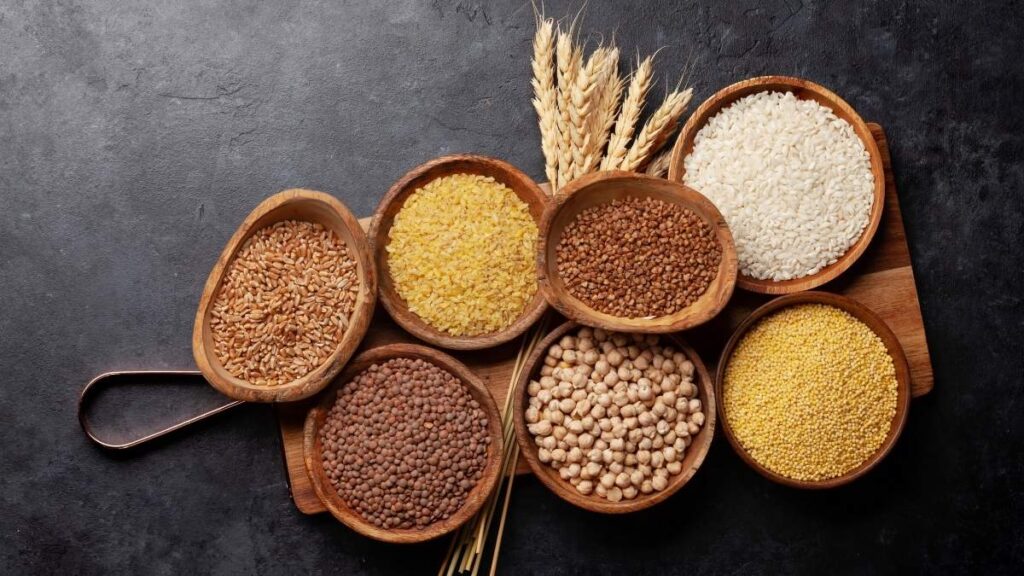
Dried beans run $1.50 per pound. One pound makes 12 servings. Black beans, pinto beans, kidney beans—get a few types for variety.
Lentils at $1.50 per pound cook faster than beans. No soaking needed. They’re ready in 20 minutes.
Pasta costs $1 to $2 per pound. It stores forever. Pair it with anything.
Oats go for $1.30 per pound. Breakfast for weeks. Also works in baked goods and as a binder in meatloaf or burgers.
The Supporting Players:
Canned tomatoes cost 79 cents to $1 per can. They’re the base for pasta sauce, chili, soup, and more.
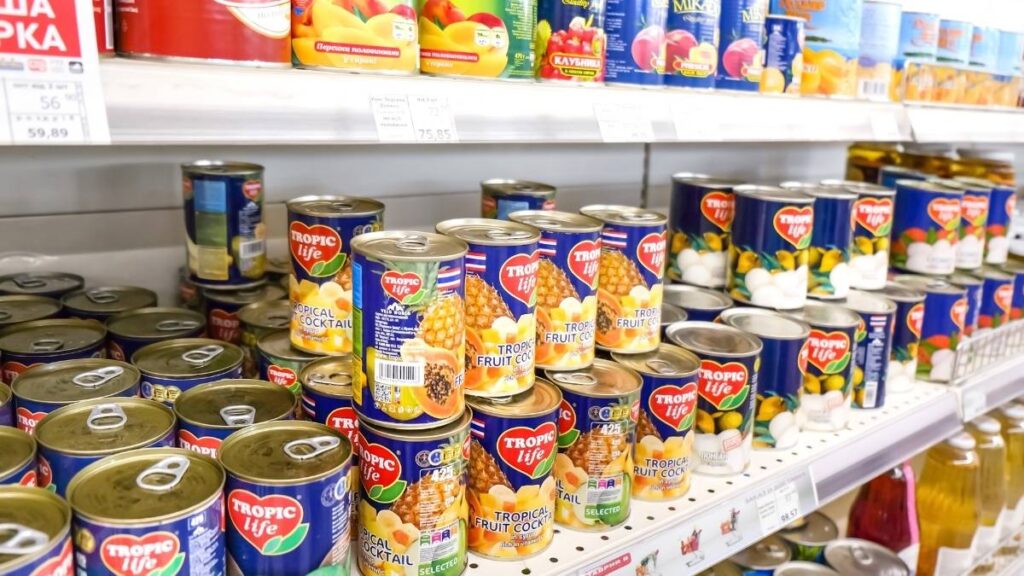
Cooking oil: Buy the biggest bottle you can afford. It lasts months.
Basic spices: Salt, pepper, garlic powder, onion powder, cumin, and chili powder. Start with these.
Flour and sugar: For baking and cooking basics.
Bouillon cubes or broth: Adds flavor to everything.
The Smart Shopping Strategy for Pantry Items:
Buy in bulk when possible. A 20-pound bag of rice costs less per pound than a 2-pound bag. Same with dried beans and oats.
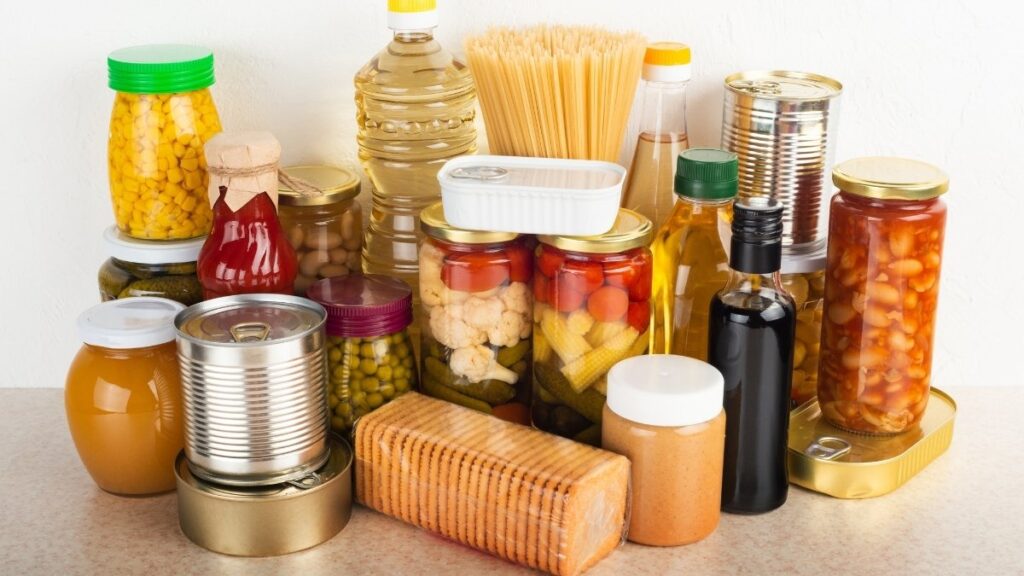
Choose store brands. They taste the same as name brands but cost 5% to 72% less. Your money goes further.
Watch for sales. Stock up when prices drop. These items don’t spoil.
Store properly. Keep everything in airtight containers. Rice and beans last for years if stored right. Flour and oats stay fresh for months in sealed containers.
Build slowly. You don’t need everything at once. Buy one or two items each shopping trip. After a few months, you’ll have a full pantry.
Think of your pantry as insurance. When you’re broke the last week of the month, these staples keep you fed.
How to Plan Meals When Every Dollar Counts
Meal planning isn’t just for food bloggers. It’s how you stop wasting money.
Here’s the truth: you can eat on $42 per week in 2025. People are doing it right now. The secret? Planning before you shop.
Why Planning Works:
You avoid buying food you already have. Ever bought tomatoes when you had three rotting in the fridge? Planning stops that.

You use everything you buy. No more throwing away spoiled food.
You save money by shopping your fridge first. Check what you have before making your list.
You resist impulse buys. A list keeps you focused.
The Simple Planning System:
Start with what you have. Open your fridge and pantry. Write down everything that needs used up.
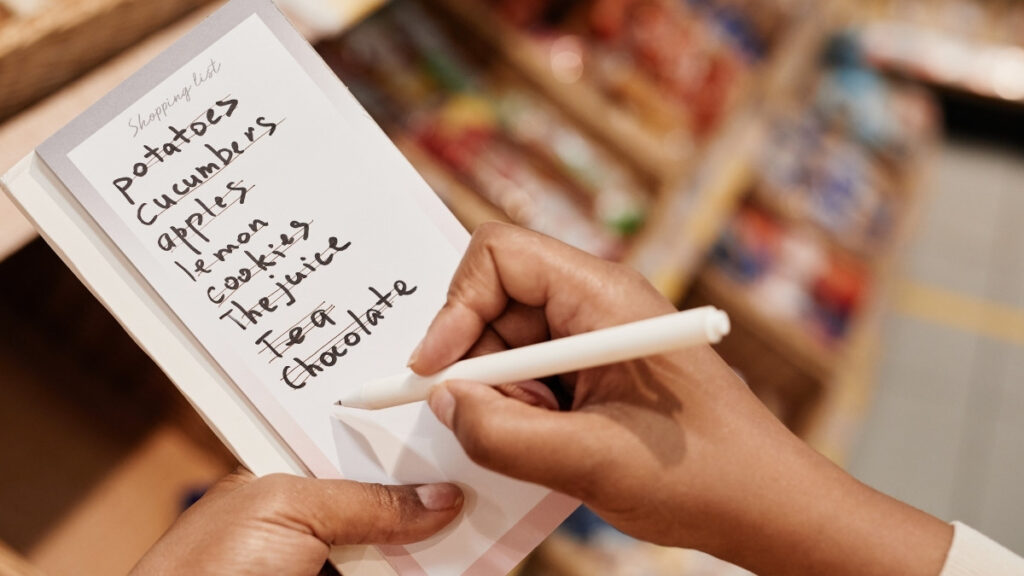
Pick your meals around those items. Got chicken and rice? That’s dinner. Have beans and tortillas? That’s lunch.
Make a flexible template. You don’t need fancy recipes. Think: Protein + Grain + Vegetable. Swap items in and out.
Plan for leftovers. Cook once, eat twice. Tuesday’s roast chicken becomes Wednesday’s chicken fried rice.
Write everything down. Use paper, your phone, whatever works. Just write it down.
A Real $42 Weekly Plan:
This actually works. Plan seven dinners. Make enough for lunch leftovers. Buy cheap breakfast items like oats, eggs, and bread.
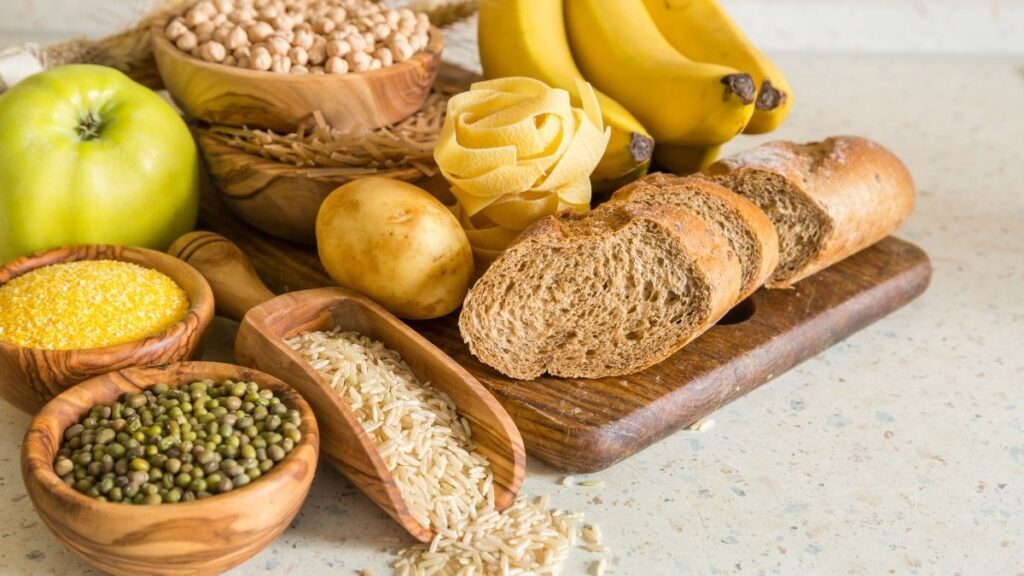
Your $42 buys: Rice, beans, pasta, a whole chicken, a dozen eggs, frozen vegetables, canned tomatoes, bread, peanut butter, oats, and milk. That’s a week of food for one person.
Breakfast: Oatmeal, eggs and toast, or peanut butter toast.
Lunch: Leftovers from dinner or simple sandwiches.
Dinner: Seven meals mixing your proteins, grains, and vegetables differently.
Batch Cooking Saves Time and Money:
Cook big on Sunday. Make a huge pot of beans. Cook all your rice for the week. Bake your chicken.
Freeze portions. Soups, chilis, and casseroles freeze great. You’re building your own frozen dinners.

Use your freezer smart. Freeze bread so it doesn’t mold. Freeze meat when it’s on sale. Freeze leftover portions.
Apps That Actually Help:
SuperCook, FoodShiner, and BigOven help you track what you have. They suggest recipes using your ingredients. FoodShiner even tracks expiration dates.
These apps stop waste. They remind you to use up food before it goes bad. And they’re free.
The Golden Rules:
Plan meals before shopping. Always.
Shop your fridge first. Use what you have.
Keep it simple. You’re cooking to eat, not to impress Instagram.
Stick to your list. Every impulse buy costs money you need elsewhere.
Build in flexibility. If pork goes on sale when you planned chicken, switch it up.
15 Meals Under $5 Per Serving (With What They Actually Cost)
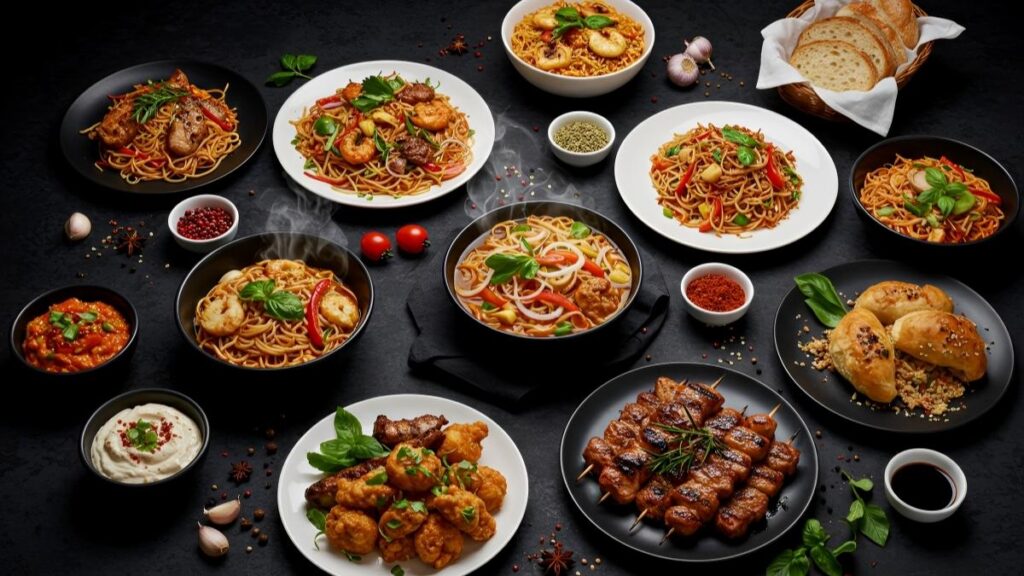
Let’s get specific. Here are real meals with real prices.
Rice and Beans (About $2-3 per serving): Cook white rice. Warm up a can of black beans. Add taco seasoning or cumin. Top with whatever vegetables you have. Cheese if you have it.
Egg Scramble Burritos (About $2 per serving): Scramble eggs with any vegetables you have—peppers, onions, spinach. Add cheese. Wrap in tortillas. Fast and filling.
Pasta with Garlic and Vegetables (About $2-3 per serving): Boil pasta. Sauté frozen vegetables in butter with lots of garlic. Mix together. Add parmesan if you have it.
Loaded Baked Potatoes (About $2-3 per serving): Bake potatoes in the oven or microwave. Top with butter, sour cream, cheese, and whatever else you like. Add frozen broccoli to make it healthier.
Tuna Sandwiches (About $2 per serving): Mix canned tuna with mayo. Add diced onion and pickles if you have them. Put on bread with lettuce and tomato.
Quesadillas (About $3 per serving): Put cheese between two tortillas. Add any vegetables you have—peppers, onions, spinach. Cook in a pan until crispy. Serve with salsa.
Fried Rice (About $2-3 per serving): Use leftover rice. Scramble an egg in a pan. Add the rice. Throw in frozen vegetables. Season with soy sauce. This is what restaurants do with day-old rice.
Sloppy Joes with Lentils (About $4 per serving): Brown ground beef. Add cooked lentils to stretch the meat. Mix in tomato sauce and seasonings. Serve on buns. Half the meat, same satisfaction.
Lentil Soup (About $2 per serving): Simmer lentils with diced carrots, celery, and onion in broth. Season well. This makes a huge pot for under $8 total.
Bean Burritos (About $2 per serving): Warm refried beans or mash up whole beans. Put in tortillas with rice, cheese, and salsa. Super filling.
Chicken and Rice Casserole (About $4 per serving): Mix cooked rice, shredded chicken, cream of mushroom soup, and frozen vegetables. Bake until hot. One pan feeds four people.
Veggie Pasta Bake (About $3 per serving): Cook pasta. Mix with jarred sauce and frozen vegetables. Top with cheese. Bake. Makes great leftovers.
Split Pea Soup (About $1.50 per serving): Simmer split peas with diced vegetables and a ham bone or some bacon. Thick, filling, and cheap.
Cabbage Stir-Fry (About $2 per serving): Chop cabbage. Stir-fry with any protein (eggs, tofu, leftover meat). Add soy sauce. Serve over rice. Cabbage is super cheap.
Pancakes for Dinner (About $1.50 per serving): Make pancakes from scratch or a mix. Serve with peanut butter or syrup. Add eggs on the side for protein. Breakfast for dinner saves money.
The Pattern You’ll Notice:
These meals use basic ingredients. They stretch proteins with grains and beans. They rely on your pantry staples. And they make leftovers that reheat well.
You’re not eating fancy. But you’re eating well. There’s a difference between cheap food and bad food.
Shopping Tricks That Put Money Back in Your Pocket

How you shop matters as much as what you buy.
Shop the Sales: Grocery stores put different items on sale each week. Chicken one week. Ground beef the next. Plan your meals around what’s cheap this week.
Shopping weekly promotions saves up to 30%. That’s real money.
Buy Store Brands: Stop paying for fancy packaging. Store brand products cost 5% to 72% less than name brands. They often come from the same factories.
Try the store brand once. If you don’t like it, switch back. But most people can’t tell the difference.
Choose Discount Stores: Aldi, Lidl, and Save-A-Lot have lower prices on everything. The stores look different but the food is fine.
You’ll save $20-40 per shopping trip just by changing where you shop.
Buy Seasonal Produce: Tomatoes cost less in summer. Squash costs less in fall. Buying food when it’s in season saves big.
Seasonal means local. Local means cheap.
Frozen Vegetables Are Your Friend: They’re just as nutritious as fresh. They last months instead of days. And they cost less per serving.
Buy frozen vegetables and stop throwing away soggy produce.
Hunt for Discounted Meat: Grocery stores mark down meat when it’s near the sell-by date. It’s perfectly safe. Just cook it that day or freeze it immediately.
You can save 30-50% on meat this way.
Make a List and Stick to It: Every item you buy without planning costs you money. Impulse purchases add up fast.
Hungry shopping leads to expensive shopping. Eat before you go.
Use Digital Coupons: Most stores have apps with digital coupons. Clip them before you shop. It takes two minutes and saves dollars.
Loyalty programs give you points for free food. Sign up for every one.
What Not to Buy: Skip pre-cut vegetables. You’re paying for convenience.
Avoid individual portions. Buy the big container and portion it yourself.
Don’t buy out-of-season produce. Those winter strawberries cost three times as much and taste like nothing.
The Bottom Line: Smart shopping isn’t hard. You just need a system. Plan, list, shop sales, buy store brands, and stick to your budget.
These strategies work together. Do them all and you’ll save $50-100 every month.
Getting Help from SNAP and Other Food Programs
You might qualify for help and not even know it.

SNAP (food stamps) helps millions of people afford groceries. There’s no shame in using programs you’ve paid into your whole life.
Who Qualifies for SNAP:
Generally, individuals earning under $1,696 per month might qualify. For a family of four, that’s under $3,483 per month.
Asset limits matter too. You can have up to $3,000 in countable resources. If you’re 60 or older or disabled, that limit is $4,500.
A family of four can get up to $975 per month in most states as of October 2025. That’s $975 worth of groceries you don’t pay for.
How Much You’ll Get:
SNAP calculates your benefit based on your income and household size.
Example: A family of three with $1,500 gross monthly income receives about $661 per month in SNAP benefits. That’s real money for real food.
Special Benefits:
Some farmers’ markets double your SNAP dollars. Spend $10, get $20 worth of produce. Ask at your local farmers’ market.
How to Apply:
Each state handles SNAP differently. Go to your state’s website and search for SNAP or food stamps.
You’ll need proof of income, expenses, and identity. The application seems long but it’s worth it.
Other Programs That Help:
BenefitsCheckUp is a free tool that finds programs you qualify for. It takes 10 minutes and might find hundreds of dollars in benefits.
WIC helps pregnant women, new mothers, and young children. Free healthy food plus nutrition education.
Senior programs offer extra help if you’re 60 or older. Many areas have senior food boxes.
Food banks don’t ask about income. If you need food, they’ll help. No judgment.
Don’t Leave Money on the Table:
Many people who qualify for SNAP don’t apply. They think they won’t qualify or that it’s too hard.
Apply anyway. The worst they can say is no. The best they can say is yes—and give you hundreds of dollars per month for food.
Stop Throwing Away Food (And Money)
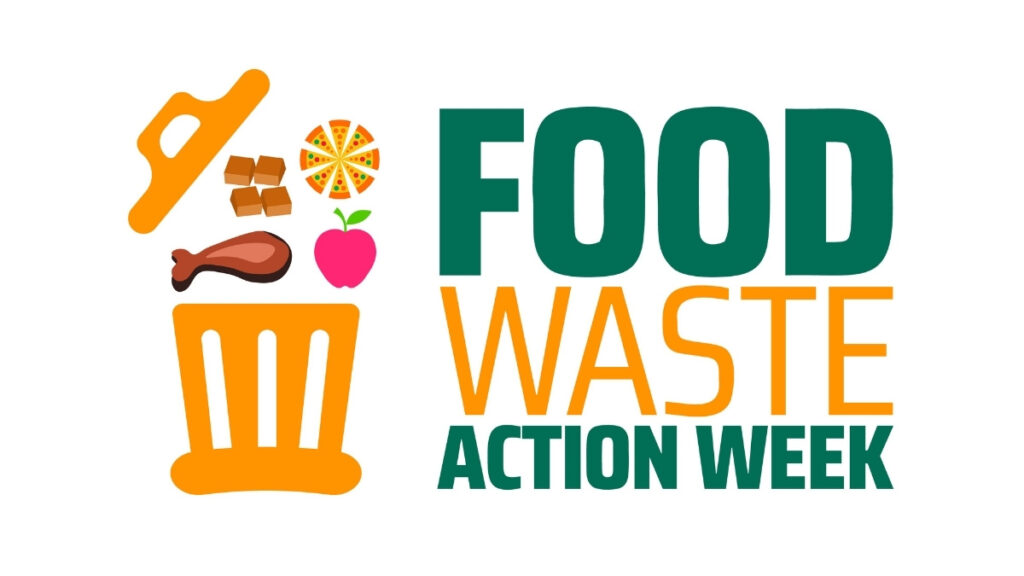
Americans waste 40% of their food. You can’t afford to be part of that statistic.
Why Food Waste Matters: Every piece of food you throw away is money in the trash. When you’re on a fixed income, you need every dollar to count.
Shop Your Fridge First: Before buying anything, check what you already have. This one habit stops you from buying duplicate items that go bad before you use them.
Make a fridge inventory once a week. Use older items first.
Understand Date Labels: “Best by” doesn’t mean “bad after.” It means peak quality. Most food lasts days or weeks past this date.
“Use by” is the only date about safety—usually on meat and dairy. Everything else? Use your nose and eyes.
Freeze Everything: Bread lasts months in the freezer instead of days on the counter. Toast it straight from frozen.
Freeze leftovers the same day you cook them. Don’t wait until they’re questionable.
Freeze vegetables before they go limp. Frozen vegetables work in soups and stir-fries.
Freeze meat when you buy it on sale. You’re building your own freezer inventory.
Prep to Prevent Waste: Wash and chop vegetables when you get home. Prepped food gets used. Whole vegetables rot in the crisper.
Cook big batches. Freeze portions. You’re less likely to waste what’s already cooked.
Plan for Leftovers: Don’t think of leftovers as sad second-day meals. Plan them into your week.
Monday’s roast chicken becomes Tuesday’s chicken soup and Wednesday’s chicken quesadillas. That’s three meals from one chicken.
Use Apps That Help: FoodShiner tracks expiration dates and reminds you to use food before it goes bad.
SuperCook and BigOven find recipes using ingredients you need to use up. Type in “chicken, rice, broccoli” and get meal ideas.
Save Scraps: Vegetable scraps make stock. Save onion peels, carrot ends, and celery leaves in a freezer bag. When it’s full, simmer it all in water. Free broth.
Stale bread becomes breadcrumbs or croutons. Blend it or toast it. Don’t buy breadcrumbs when you can make them.
The Reality: You work hard for your money. Don’t throw it in the trash can. A little planning stops most food waste.
Staying Healthy When Money Is Tight

Cheap food doesn’t have to mean unhealthy food.
Your body needs protein, carbs, fats, vitamins, and minerals. You can get all of them on a budget.
Protein Without the Price:
You read the protein section earlier. Plant proteins cost less and work just as well. Your body doesn’t care if protein comes from chicken or beans.
Greek yogurt, cottage cheese, and milk give you affordable protein plus calcium. Eggs remain one of the best nutrition bargains.
Peanut butter and canned beans have stable prices. They don’t jump around like meat prices.
Save Money, Eat Vegetarian (Sometimes):
Vegetarian households save an average of $130 per month compared to people who eat meat at every meal. You don’t have to go full vegetarian. Just eat meatless more often.
Beans and rice. Pasta and lentils. Peanut butter sandwiches. These meals cost less and still fill you up.
Vegetables on a Budget:
Frozen vegetables have the same nutrients as fresh. They cost less per serving and never go bad.
Buy fresh produce when it’s in season and on sale. Otherwise, buy frozen.
Cabbage, carrots, and onions are cheap year-round. Build meals around what’s affordable now.
Budget Superfoods:
Oats cost next to nothing and give you fiber and protein. They lower cholesterol too.
Beans provide fiber, protein, and tons of vitamins. They’re one of the healthiest foods you can eat.
Frozen berries work in oatmeal or smoothies. Antioxidants on a budget.
When You Need Supplements:
Most people get enough nutrients from food. But if you’re barely eating or avoiding whole food groups, you might need help.
A basic multivitamin costs $5-10 for a month’s supply. That’s cheap insurance.
If you’re vegan, you need B12. If you don’t get sun, you might need vitamin D. Talk to your doctor about free or low-cost supplements through clinics.
Fortified Foods Help:
Breakfast cereals add vitamins to cheap grains. Milk has added vitamin D. Flour has added iron and B vitamins.
These fortified foods help fill nutrition gaps when you can’t afford variety.
Balance Without Breaking the Bank:
Aim for protein, a grain or starchy vegetable, and some vegetables at each meal. It doesn’t have to be perfect.
Peanut butter and jelly with an apple? That works. Eggs with toast and frozen spinach? Also works.
Don’t stress about eating perfectly. Stress is worse for you than an imperfect diet. Do your best with what you have.
Cooking Methods That Save Money
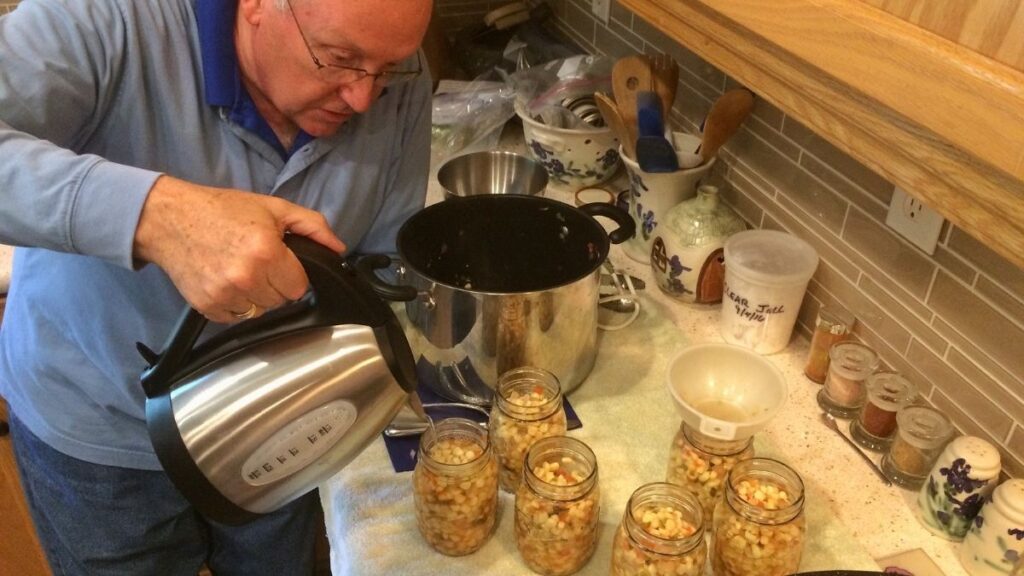
How you cook matters.
Batch Cooking Is King:
Cook once. Eat three times. That’s the goal.
Make a huge pot of chili on Sunday. Eat it Monday. Freeze portions for later in the month.
Bake a whole chicken. Eat it for dinner. Use leftovers for sandwiches and soup. Simmer the bones for broth.
One-Pot Meals Save Everything:
Soup, chili, stew, pasta dishes—cook everything in one pot. Less cleanup. Less energy used. Same great food.
Slow Cooker Magic:
Throw ingredients in before work. Come home to dinner. Slow cookers turn cheap, tough cuts of meat tender.
They use less electricity than your oven. And they make tough vegetables soft.
Rice and beans. Pot roast. Pulled pork. Whole chickens. A slow cooker does it all.
Rice Cookers Work:
Set it and forget it. Perfect rice every time. Many models keep rice warm for hours.
You can cook other grains in rice cookers too. Quinoa, barley, even oatmeal.
Sheet Pan Dinners:
Put protein and vegetables on one pan. Season everything. Bake. One pan, one meal, easy cleanup.
Pressure Cookers for Speed:
Electric pressure cookers (like Instant Pots) cook beans in 30 minutes instead of 3 hours. They make tough meat tender fast.
They cost $50-100 but last for years. Worth it if you eat beans and rice regularly.
Energy-Efficient Cooking:
Microwaves use less energy than ovens. Reheat in the microwave, not the oven.
Smaller appliances like toaster ovens use less electricity than full-size ovens for small meals.
Keep lids on pots when boiling water. It boils faster and uses less energy.
Essential Budget Tools:
You don’t need fancy equipment. A good knife, a cutting board, a large pot, a skillet, and baking sheets cover most cooking.
Buy tools secondhand. Thrift stores have quality kitchen stuff for pennies.
Take care of what you have. Cheap tools that last beat expensive tools you can’t afford.
Finding Help in Your Community
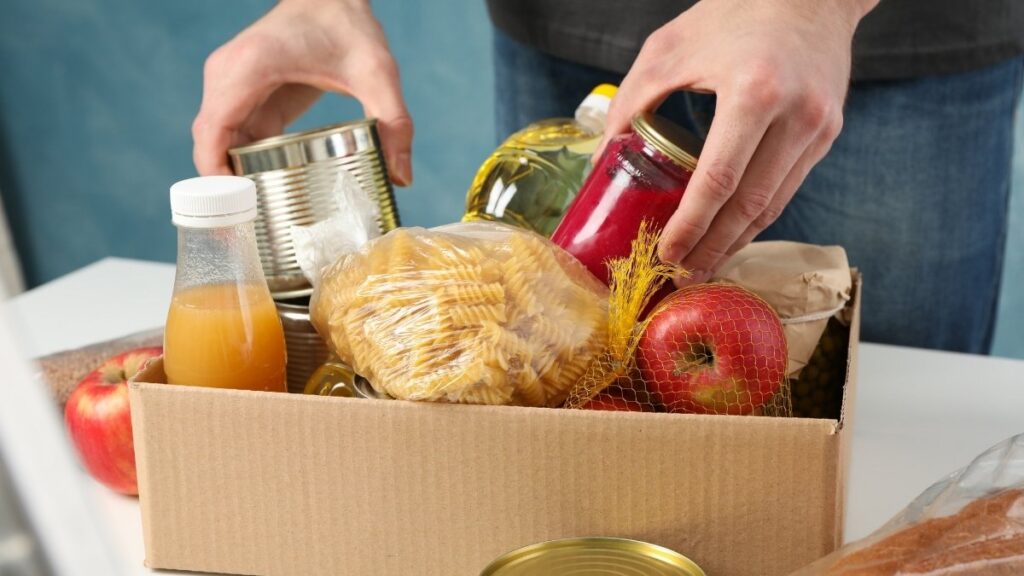
You don’t have to do this alone.
Food Banks and Pantries:
Every community has food assistance. Food banks don’t ask about your income. If you need food, they help.
Feeding America runs a network of food banks across the country. Visit their website to find one near you.
Many pantries let you pick your own food like a grocery store. Others give boxes of staples.
Go as often as you need. That’s what they’re there for.
Senior Discount Programs:
If you’re 60 or older, you qualify for special discounts. Age Friendly programs can save you up to $240 annually on groceries and other essentials.
Many grocery stores offer senior discount days. Ask at customer service.
Community Gardens:
Some areas have community garden plots for free or very cheap. Grow your own vegetables and save money.
Community gardens often share extra produce too. One person’s overflow becomes your dinner.
Food Co-ops:
Co-ops buy food in bulk and split it among members. You get grocery store food at wholesale prices.
Some require volunteer hours instead of membership fees. Worth checking out.
Church and Nonprofit Meal Programs:
Many churches serve free community meals. No membership required.
Senior centers often have lunch programs for people 60 and older. Hot meals plus community.
Meals on Wheels:
If you’re homebound, Meals on Wheels delivers. Free or low-cost hot meals brought to your door.
They serve seniors and people with disabilities. Call your local office to see if you qualify.
Food Rescue Organizations:
These groups pick up extra food from restaurants and grocery stores. They give it to people who need it.
The food is perfectly good—just extra. Rescuing it stops waste and feeds people.
How to Find Help:
Call 211. It’s a free referral service that connects you to local resources.
Ask at your senior center or library. They know what’s available locally.
Check with local churches and nonprofits. Even if you’re not religious, many programs are open to everyone.
Talk to your doctor’s office. They often know about food assistance and can help you apply.
Remember This:
These programs exist because people need help. You’re not taking from anyone by using them. You’re using resources designed for exactly your situation.
Your Next Steps: Start Today
You’ve got the information. Now what?
Eating well on a fixed income isn’t about having more money. It’s about using what you have smarter.

What Actually Works:
Planning meals stops waste and saves money. Buying basic staples gives you foundation to cook anything. Shopping sales and store brands stretches every dollar. Using assistance programs adds money to your food budget.
These aren’t tricks. They’re tools. And they work when you use them.
Start Small:
Pick one thing from this guide. Just one.
Maybe it’s meal planning this week. Maybe it’s applying for SNAP. Maybe it’s buying dried beans instead of canned.
Do that one thing. Get comfortable with it. Then add something else.
Change happens one habit at a time.
This Week’s Challenge:
Create a simple meal plan using three pantry staples you already own. Rice, beans, and eggs? Plan three meals. Pasta, canned tomatoes, and frozen vegetables? Plan three different meals.
Write it down. Shop for anything missing. Cook those meals.
Track how much you spend. Track how much food you throw away. Compare it to last week.
Small changes create lasting impact on both your budget and your health.
The Truth About Fixed Income Eating:
It’s hard. Prices keep going up while your income stays flat. That’s real and it’s frustrating.
But you can still eat well. Good food doesn’t require a big income. It requires knowledge and planning.
You have the knowledge now. You’ve got meal ideas, shopping strategies, and resources for help.
Remember: eating well on a fixed income isn’t about deprivation. It’s about making informed choices that nourish your body while respecting your budget.
You’re not failing if you need help. You’re smart for finding and using resources available to you.
Start where you are. Use what you have. Do what you can.
That’s enough.








